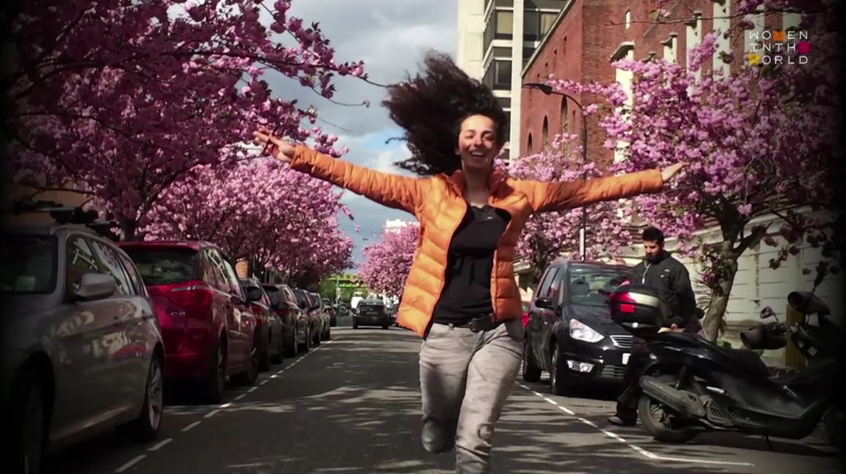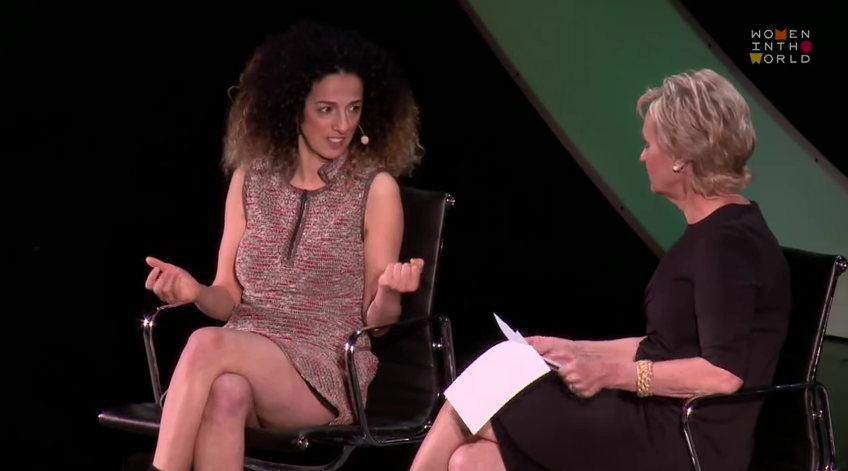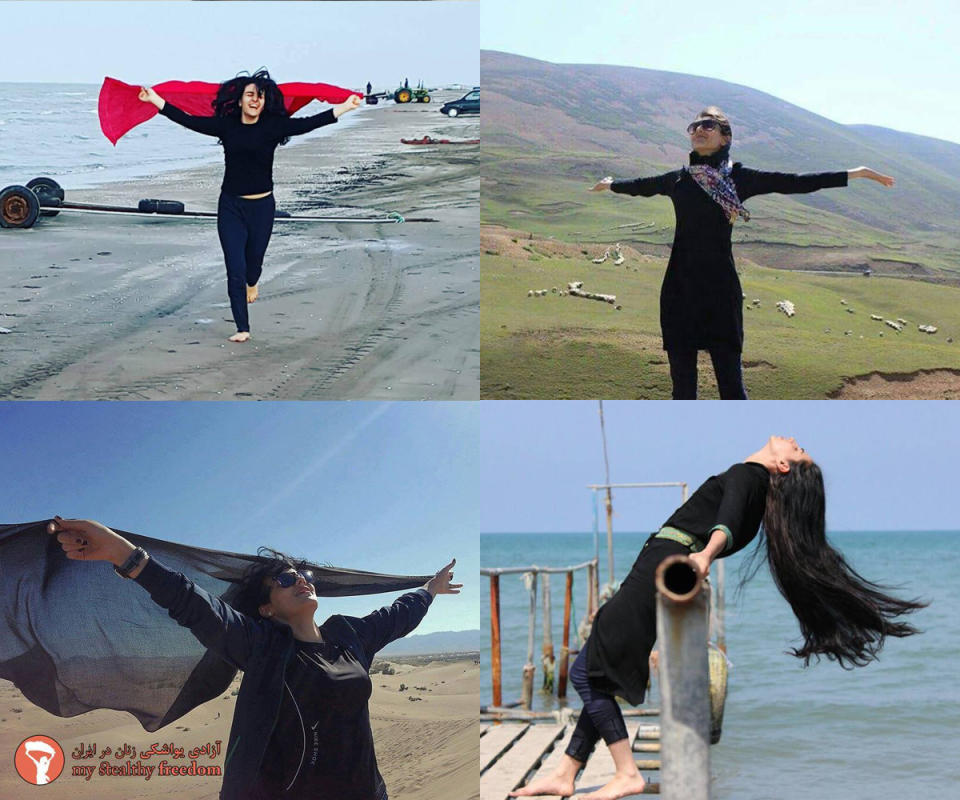'My Hair Was a Hostage,’ Says Iranian Hijab Activist

The photo of Masih Alinejad that started the My Stealthy Freedom phenomenon. (Photo: Tina Brown’s Women in the World Summit)
Masih Alinejad is an Iranian journalist, human-rights activist, social-media change-maker and “owner of a glorious head of hair that would be criminal to cover,” noted Tina Brown, who interviewed Alinejad in front of a packed audience Thursday at Brown’s seventh annual Women in the World Summit in New York City. And it was that last reference, to the covering of hair, that’s been at the heart of the activist’s rise to prominence around the globe.
Related: Women Transforms Into Stunning Disney Characters While Wearing Her Hijab
From infancy into her early adulthood, Alinejad, along with all women and girls, was forced to wear a hijab (head scarf), as part of the laws put into place by the 1979 Iranian revolution — with punishments for going scarf-free, to this day, including lashings.
Despite growing up in a conservative, rural area, Alinejad grew up to become a rabble-rousing activist, moving to London in 2007 to study communications and work as a journalist. By 2009 she was letting her head be exposed in public, and began living in exile there, later moving to her current home, Brooklyn. In 2014 she kicked off My Stealthy Freedom, posting a moving photo of herself running through trees that were bursting with blossoms.

Alinejad onstage with Brown in New York City on Thursday. (Photo: Tina Brown’s Women in the World Summit)
“I was enjoying the wind through my hair,” she explained to the audience Thursday. “Maybe it’s nonsense to you, but to us, it means a lot… And every time I feel the wind through my hair it reminds me of the time my hair was a hostage at the hands of the Iranian government. That was the caption,” Alinejad explained of the photo she posted — which became a watershed moment for her online revolution.
Related: Dolce & Gabbana Launches Abaya and Hajib Collection for the ‘Arab World’
“If you share it with me, then we are not going to be stealthy anymore. We are not going to be having our freedom in secret,” she said was the idea behind the Facebook page. “I was bombarded with pictures. There are a lot of brave women inside Iran, and they wanted to say ‘no’ to compulsory hijab.”
In a matter of days, My Stealthy Freedom became a social-media phenomenon in Iran and around the world, drawing more than 970,000 fans to this date, when photos continued to pour in.
All that exposure made Brown ask Alinejad, “Do you fear sometimes these are going to get them into trouble when you post them on My Stealthy Freedom?” But the activist said she only saw the empowering side of such moves.

Some of the women inspired to share their scarf-free photos on My Stealthy Freedom. (Photos: Facebook)
“Being a woman in Iran means you live in a dangerous situation. You live with fear, every day, when you want to go out,” she explained. “According to the police of Iran, 3.6 million women were warned and stopped by morality police in the street within a year. And 40,000 cars were confiscated. Why? Because the women drivers did not have a proper hijab. … So these women, who were in Iran and were putting themselves in danger by saying no to forced hijab, they didn’t send their pictures to me, but they were at risk. For me, just giving them a voice means a lot.”
Going without your headscarf after a lifetime of indoctrination is a difficult move, psychologically, for women, Alinejad explained, and it took her three years outside of Iran to feel ready to go scarf-free full-time. “I didn’t want to break my father’s heart,” she explained, adding, “Hijab can be part of your identity and it’s not as easy as you think… It’s like taking part of your body and throwing it away.”
While her father was upset enough by her tossing aside of hijab to want to “take me to heaven by force,” she said, her mother, who is conservative and illiterate, is more understanding, and “doesn’t want to force me to be like her.”
Today, in large part because of Alinejad’s outspokenness, Brown said, things are slowly starting to change for women in Iran. “Air France reinstated its Paris to Tehran route recently, and many of the female crew members said that they wouldn’t work it if they had to wear a hijab,” Brown noted. “In solidarity, you launched a campaign urging tourists to share pictures.” Again, Alinejad was bombarded, this time with supportive photos of international women freeing their hair and pledging their support while visiting her country.
“This is not an internal matter. This is the time for all women around the world who visit Iran to stand with us,” said Alinejad — who works from the U.S. with her Iran contacts to expose human-rights abuses, including the recent sexual harassment of an Iranian journalist and the death of activists killed during Arab spring protests.
“While I enjoy my freedom I still cannot forget about my people,” she said, who thinks daily about the fact that Iranian women break law if they don’t cover their heads — as well as if they are caught singing, dancing, or holding the hand of lover. And in that case, Alinejad said, “I’m a master criminal… The Iran government thinks I have too much hair, too much voice, and am too much of a woman.”



